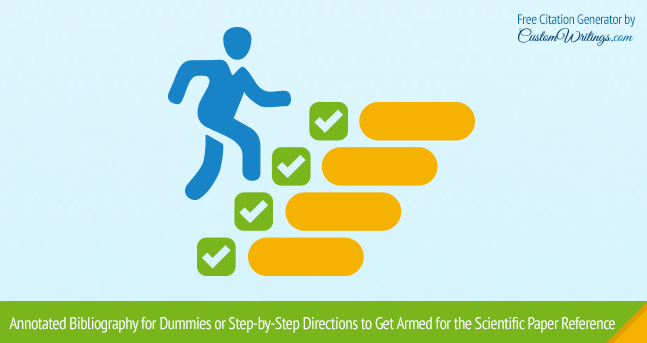 Having to write an annotated bibliography for the first time can be intimidating and working on it usually raises a lot of questions: Where to begin? What can I do? What can’t I do? A lot of students do not have a clear idea of how this works, so we have put together an “annotated bibliography for dummies” guide that will help you start.
Having to write an annotated bibliography for the first time can be intimidating and working on it usually raises a lot of questions: Where to begin? What can I do? What can’t I do? A lot of students do not have a clear idea of how this works, so we have put together an “annotated bibliography for dummies” guide that will help you start.
First of all, let’s shed some light on what an annotated bibliography really is and how it is different from other types of bibliography. An annotated bibliography is different from the straightforward one because it comes with concise annotations added to the reference list.
An annotation is a short text, which offers a brief overview on the purpose of the cited text, what the central ideas of the material are and how the author approached them. If you immediately thought of it like being the abstract you can find at the beginning of an academic article, you are almost right, but an annotation is usually more than a descriptive summary. While you can write a purely descriptive annotation, it helps a lot if you add your critical personal view, as it shows that you have truly researched your thesis or essay and have put thought into it.
The two main types of annotations are descriptive and evaluative. Here are the key elements for each:
- Citation details (write them as you would do for a simple bibliography; you can use APA, MLA or Harvard citations styles, depending on the requirements);
- Present the main purpose of the work in one short statement (You can start with “In this article the author presents…” or “The author’s research focuses on…”, etc.);
- Write a summary of the main ideas, and how the author has approached them (used an academic style; kept the sentences clear and concise or used transition words such as therefore, moreover, however etc.).
So far, these are the elements of a descriptive annotation. To write an evaluative annotation you have to add some personal impressions and comments.
- Present a few personal points of view on how strong the research is, what its limitations or strong points are.
- Connect the author’s work to your research: how helpful it is and how you plan to include it in your own research.
Common mistakes while writing an annotated bibliography are directly related to drifting from its definition. Adding up irrelevant pieces of information or omitting the required one might provide you with a negative review, so make sure all the references have correct annotations.
- Do not include the title of the cited work in the annotation, as you have already mentioned it in the citation. It might give the impression that you have no idea what to write about and you have not researched enough.
- Do not cross references in your annotation. You should focus on how the author approached the main ideas of his work. While he might cross other authors’ references to make a point, your annotation should not go into these details, but keep the information to the cited article or book.
And keep in mind that you can avoid any mistakes with the help of our automated Free Citation Generator.
